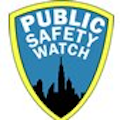Transportation Security – Keep Passengers Happy and Safe
Metro officials in Washington, D.C. recently announced they would be putting surveillance cameras in some buses and train cars. New York made a similar announcement about six weeks ago and many cities are expected to follow their lead. Transportation security is on the rise partially fueled by DHS stimulus funds and some recently highly publicized violence on public transit. Public rail systems in San Francisco, Toronto and Philadelphia have all recently reported violent incidences.
There are some very good ways to make public transportation safer and more efficient, according to Larry Mays, group director of national accounts, transportation and logistics for ADT. He says that video surveillance can be an effective tool that acts as a deterrent and also provides excellent investigative and forensic information after an incident.
It looks like Washington, D.C. transportation officials will be putting cameras on buses, in ventilation shafts, at station entrances and near the end of platforms. Officials are saying the cameras will first and foremost help them to better manage crowds.
ADT’s Mays, a 32-year veteran of transportation and logistics information management systems says that for any transportation facility or system it is important to assess all of the potential areas of risk. Mays said these include:
- Ventilation shafts
- Emergency path/shafts
- Platform and passenger areas
- Fare collection areas
- Parking lots
- Common corridors
- Non-public operating room
Mays pointed out that there are other technologies in addition to surveillance cameras that can help in transportation security. Some of those include, access control, intrusion detection, monitoring, panic buttons, and in some instances video analytics.
Mays agreed with D.C. officials that security cameras can go beyond security and provide vital information for better and more efficient operations. Cameras can let officials know about traffic patterns, usage, and emergency situations. That is the kind of information that can go a long way towards helping them to keep transit passengers more satisfied and safer.
--PSW Saff
Photo of Larry Mays
For more information go to www.adt.com/transportation
About the Author


